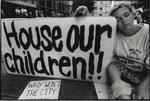Housing: The Scottish way
Scotland has resolved to put an end to bad housing by 2012, by obliging local authorities to make real and visible progress. Initial signs are encouraging.Scotland has resolved to put an end to bad housing by 2012, by obliging local authorities to make real and visible progress. Initial signs are encouraging.

